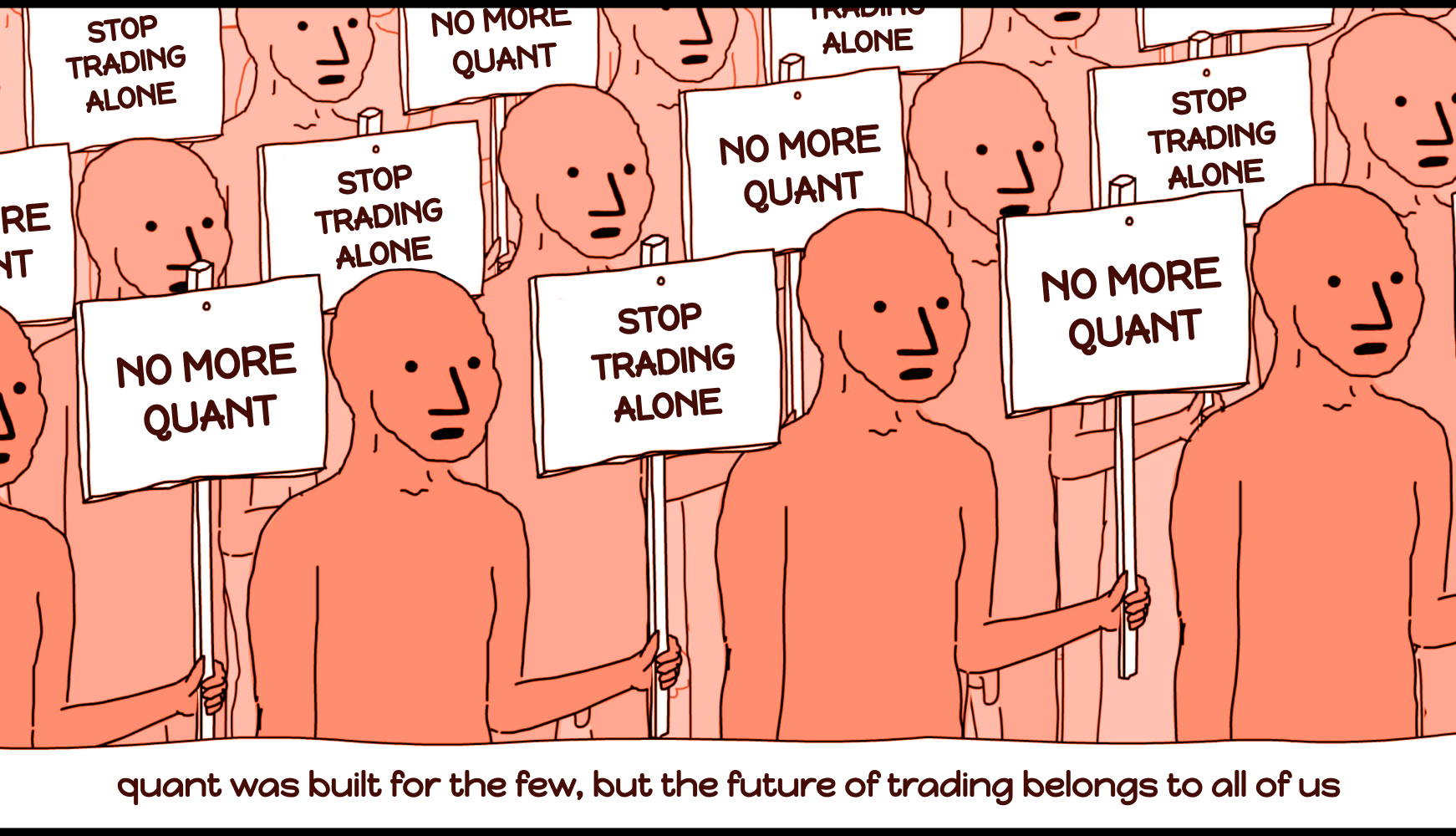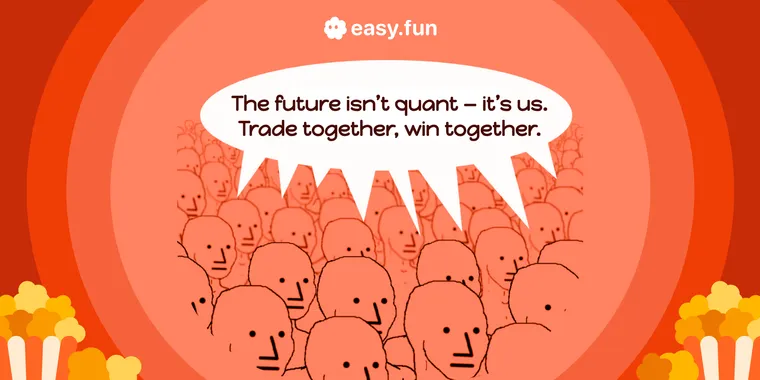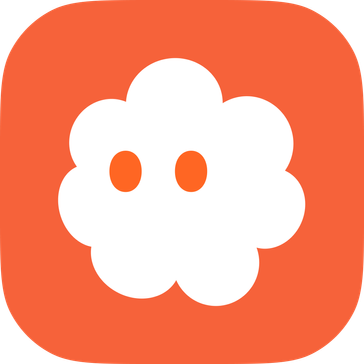The Shift to Human-Leading Finance
For a long time, the financial world was all about complex math and computer programs. This was a place for big hedge funds and experts with powerful computers and complicated formulas.(This approach, called "quant trading," was based on the idea that cold, hard data could find patterns in a sea of information, which would help people make smarter decisions without emotions getting in the way. This was an era where whoever controlled the most information and had the most computer power won.
But now, a new way of doing things is taking over. Thanks to decentralization and the blockchain, the power is moving away from the few and into the hands of many. This change is not just about technology; it's a big shift in how we think about money. It shows that a group of people working together can be much smarter and more flexible than even the most advanced computer program.
To understand this big change, let's think about a high-stakes poker game. In the past, the game was controlled by a player who only used math to figure out the chances of their hand winning. This player's strategy was rigid and based on numbers alone. They couldn't handle the unexpected. But the future of finance belongs to the player who, in addition to the math, also knows how to read the other players, understand the mood at the table, and change their strategy in real time based on these human clues. This is the social advantage—a much smarter and more reliable way to play the game.
The Inaccessible World of Quantitative Trading
The data-driven approach, while smart for a small group, is too difficult and out of reach for most everyday investors. This section explains the major problems that social trading is designed to fix.
The Walls of Quant Finance
The first big roadblock for quantitative trading is that it relies heavily on special skills and expensive tools. It requires people who are good at advanced math and computer coding and have a lot of market experience, which keeps it out of reach for the average person. It's a method mainly used by big financial firms, not individual traders. The strategies themselves are also super complex, using complicated math models and lots of data, which is way too much for most retail investors to handle.
Plus, the computer models are built on shaky ground. A big risk is called "overfitting," which is when a model is too focused on old, past data. This means it looks great when you test it with old information but falls apart in the real world when the market changes in unexpected ways. For example, during the COVID-19 pandemic, the market changed so fast and so much that many quant strategies failed, leading to huge losses. These models, built for predictable times, were too rigid for real uncertainty. This reliance on history is a major weakness in a market that's always changing.
Finally, relying on technology brings its own risks. Computer models can have software bugs, connection problems, and be at risk from hackers. One small coding mistake can cause a huge financial disaster, as automated sell orders can quickly overwhelm the market and cause prices to drop very fast. This technical weakness highlights the difference between a rigid, pre-programmed system and one built on the real-time, collective smarts of people who can adjust to unexpected events.
A Tale of Two Traders: The Human Problem
Beyond the technical issues, traditional finance causes real stress and practical problems for individual investors. A major one is "information asymmetry," which means that regular people don't have access to the same good and fast information that professionals do.
For the individual, not having a clear plan is a big problem. Without a strategy, traders tend to make quick, emotional decisions, get impatient, and manage their money poorly, which are all common issues that come from emotional trading. The challenge of staying calm during a trade can be just as unpredictable as the market itself, often leading people down the wrong path. This is a core problem that quantitative trading, by its very nature, can't solve.
The "advantage" once held by big companies because of their computer power and expert staff is now being opened up by social platforms. The social "advantage" isn't a complex computer program, but the combined knowledge and experience of a community. The problems of the old, data-driven approach—that it's hard to access and too rigid—create a perfect opening for the social finance model to step in and offer a community-driven, easy-to-use, and flexible alternative. The power is moving from the hands of the few to the combined intelligence of the many.
| Feature | Quantitative Trading | Social Trading |
| Approach | Mathematical Models and Algorithms | Community, Collective Intelligence, and Sentiment |
| Access | Limited to Experts and Institutions | Open to All, Beginner-Friendly |
| Reliance | Historical Data and Technical Analysis | Real-time Community Activity and Sentiment |
| Strengths | Speed, Data-Driven Decision-Making | Adaptive, Community-Driven Resolve |
| Weaknesses | Brittle in Changing Markets, Complex, Inaccessible | Requires Due Diligence, Inherent Third-Party Risk |
The Social Edge: A New Winning Strategy
The future of finance is a game of adapting and thinking together, not just of number-crunching. Social trading model provides a new winning strategy that is more open, transparent, and resilient than the old, data-focused one.
Mastering the Social Game
The poker story explains this new strategy perfectly. The quant player calculates pot odds—the chance of winning based on the cards they can see. This player has a mathematical advantage, but their strategy is rigid and based on a fixed set of possibilities, what if another player is bluffing? Their system is blind to the unpredictable nature of human behavior at the table. In contrast, the social player also looks at the odds, but their true power comes from "reading the room". They watch what their opponents do, listen to what they say, learn their character, tells, and feel the general mood at the table. This intuitive, real-time feedback allows them to change their strategy beyond just math, making them a much better player. The player who can do both the math and the "social read" will always have the upper hand, especially in a fast-changing and unpredictable game. This is the same scenario that caught Citadel off-guard during the GME squeeze, the first time true social trading took center stage in the global markets.
A system that relies on the collective intelligence of people, who can change their minds in real-time, together, is naturally stronger against unexpected "black swan" events than a system based on rigid, old-data algorithms. This means the future of finance is not about replacing quant with social, but about changing the rules where a smart trader uses numbers as a base, but plays their hand as a member of a global team, of a community where social signals force the market to react, not the trader.
The Power of Collective Intelligence
Social trading platforms work like a group brain. They let traders "talk with others, watch each other's trades and learn about how they make decisions". This community-driven approach is a great source of new ideas and inspires new analysis. Sharing alpha. It gives real-time data on how people are feeling and position themselves ahead of major moves. This is like having a bunch of players giving you "tells" at the poker table. This group market intelligence uses information from sources like social media posts to create signals for trading. This gives you an important layer of market knowledge that goes beyond simple numbers like price and volume. The bigger the community, the bigger the signals.
This group intelligence is rewarded through reputation. On social platforms, experienced traders often earn "both money and status" and are featured on "leaderboards based on popularity and success rate". Members who "show their trustworthiness online have a powerful influence" over others' behavior. In this new financial world, a trader's success is not just judged by their money, but by how much influence, transparency, and trust they have in the community. This fits with the larger Web3 movement and positions social trading as a forward-thinking, decentralized model of trust.

The Real Social Future: The easy.fun Model
That vision of what it means to trade together is what inspired easy.fun. Social finance is a real and effective way to solve the problems of the modern trader and inspire the next generation. Its features are not just tools; they are a connected system designed to bring the social idea to life.
Live Room and Copy Trading: Automatic Action
Copy trading lets people in the financial markets "automatically copy positions opened and managed by other selected individuals". This feature directly solves the problem of not having a clear plan and makes it easy for beginners to "take advantage of the best strategies without needing expert knowledge yourself". The Live Room feature acts as the community town square where trades are shown as they happen, giving users instant visibility and making them feel like they are part of a shared experience. It's a simple way to get involved in the market, allowing users to learn and grow their portfolios with very little effort.
On-Chain Transparency: The Foundation of Trust
One of the biggest issues with social trading is having to trust a third person's judgment while still taking on all the risk.
easy.fun solves this basic problem with on-chain transparency. Blockchain technology acts like a "secure and transparent chain" and a "tamper-proof record" of every transaction. By making a leader's performance public and impossible to change on the blockchain, the platform builds the trust needed for a big social trading community to work. This system reduces the need for traditional middlemen and creates a secure record of performance that can't be changed or faked. This verifiable transparency creates a positive cycle: as on-chain data builds trust in signal providers, more people copy them, and share in the rewards. This increased activity then makes participation data more valuable, which in turn brings in more users and leaders.
Real-Time Sentiment: The Pulse of the Market
This feature gives traders the "read the room" advantage that makes the social model unique. Real-time communication and sentiment analysis allow traders to see "the overall emotional state of traders" and find "potential turning points" in the market when feelings become extreme. The community provides live, useful leading data that traditional quant models just don't have. This information is gathered by using unstructured data from sources like social media posts and community chats, turning people's opinions into useful signals for trading strategies. This helps traders avoid emotional decisions by giving them an objective, community-backed view of the market's mindset.
The slogan "easy trades, fun wins" means the future of finance is already here with easy.fun. It isn't just a marketing line; it's a smart choice. By framing trading as "easy" and "fun" and using social connections, the platform can help traders enjoy a very human experience, while finding confidence in the consensus of emotions, which is a new key skill for trading. This gamified, social environment is a sharp contrast to the cold, complex world of traditional data-driven trading, making it a powerful tool for changing behavior and teaching people about money.
| Trader Pain Point | easy.fun Feature | Solution or Benefit |
| Information Asymmetry | On-Chain Transparency | Creates a secure, public record of performance, democratizing access to leader data. |
| Emotional Trading | Real-Time Communication & Sentiment | Provides a community-validated view of market psychology, helping traders make objective decisions. |
| Lack of a Clear Plan | Live Room & Copy Trade | Automates the process of following proven strategies, allowing beginners to learn without needing expert knowledge. |
| Lack of Trust | On-Chain Transparency | Ensures a tamper-proof, immutable record of performance, building confidence in a third party's judgment. |
Future Vision: The Democratization of Fun Trades
The future of finance is a continuation of the bigger fintech revolution, which is already changing societies by making financial services easier for everyone to access. This movement is already helping people who don't have bank accounts and empowering small business owners to grow their companies and save money. Social trading is a clear and powerful next step in this trend, making complicated trading accessible to more people with fewer of the traditional barriers to entry.
The appeal of fintech solutions to younger people, like Millennials and Gen Z, who are "money-conscious" and like the idea of an "always online" bank, shows a generational change in how people see finance. For them, money isn't about a physical bank or a scary wall of numbers; it's a community activity they can do on their phone. The social model, with its focus on community and real-time interaction, isn't just a passing fad but the foundation for how a new generation will handle their money.
This change shows social trading is more than just a tool for profit; it's a socially responsible innovation that helps more people get involved in finance and brings financial education and opportunity to a much wider audience. It's a real way to deliver on a promise of the fintech revolution: to allow more people to own a real piece of the growth happening around them. We are building a better system that people can actually enjoy.
This vision is summed up in the slogan, "easy trades, fun wins". It's a vision where finance is no longer intimidating but is engaging and accessible for all. The social way of doing things, built on transparency and working together, represents the ultimate way to make finance fair for everyone.
The evidence is clear: the future of finance is a collaborative, community-driven world that moves beyond the rigid limits of traditional data-based models. New exciting on-chain technology like copy trading, creator live trade rooms, and real-time sentiment analysis, is a perfect example of this new way of thinking.
Join degen traders using collective intelligence to outplay volatile markets!
- Register for the Movement - Be the first to get access.
- Join our Telegram - Meet your future crew.
- Follow us on X - Be part of the conversation.


